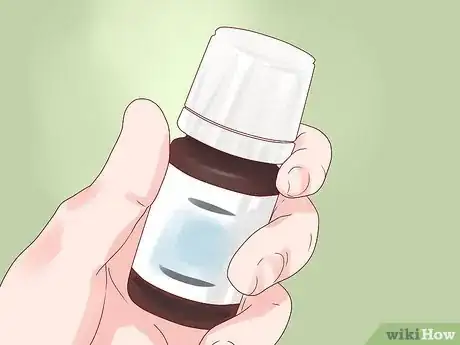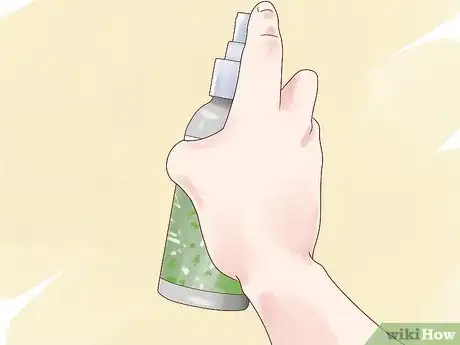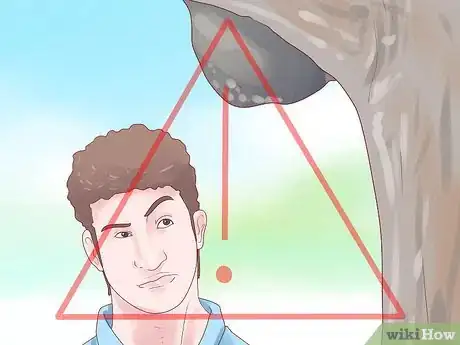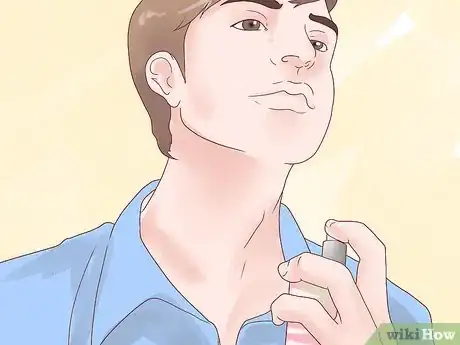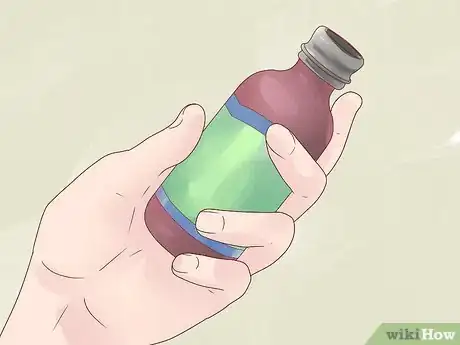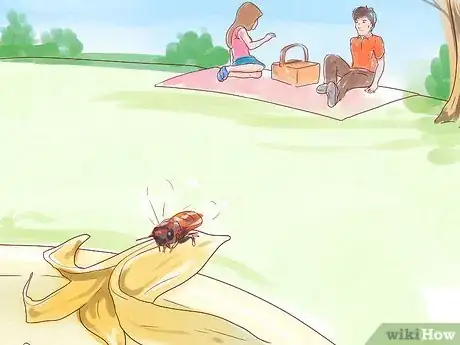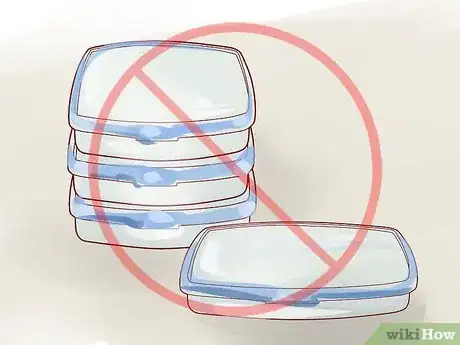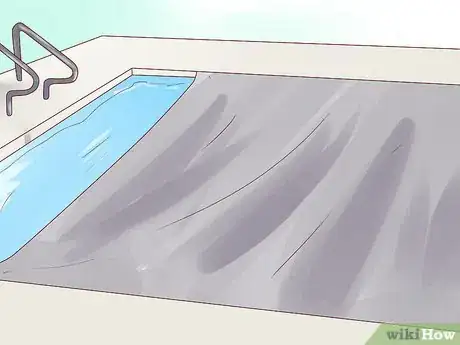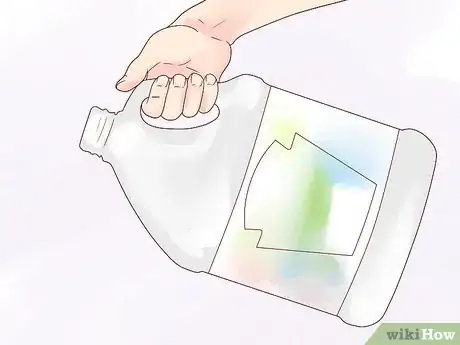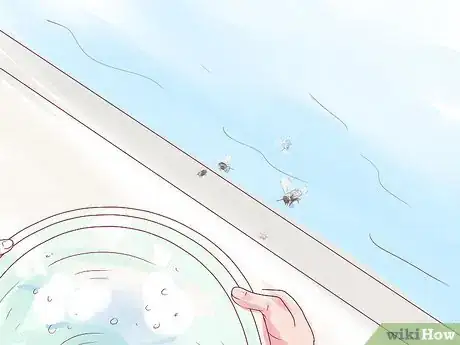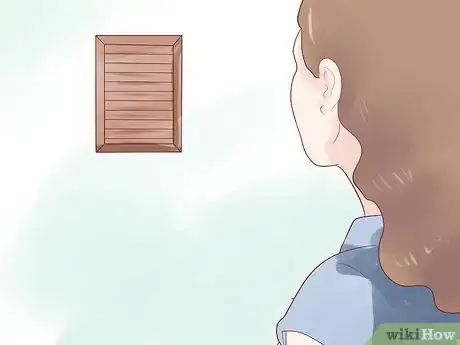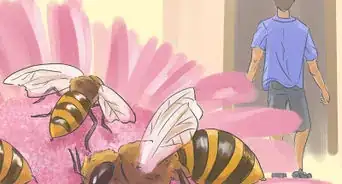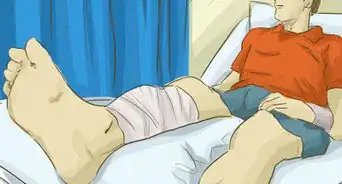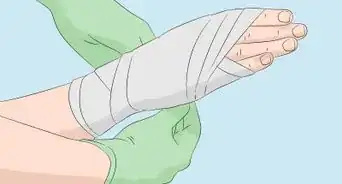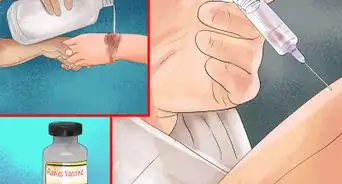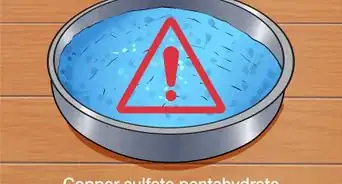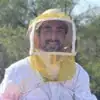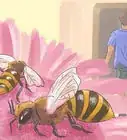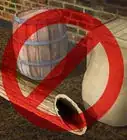This article was co-authored by Steve Downs. Steve Downs is a Live Honey Bee Removal Specialist, Honey bee Preservationist, and the Owner of Beecasso Live Bee Removal Inc, a licensed bee removal and relocation business based in the Los Angeles, California metro area. Steve has over 20 years of humane bee capturing and bee removal experience for both commercial and residential locations. Working with beekeepers, agriculturalists, and bee hobbyists, Steve sets up bee hives throughout the Los Angeles area and promotes the survival of bees. He has a passion for honeybee preservation and has created his own Beecasso sanctuary where rescued bee hives are relocated and preserved.
There are 10 references cited in this article, which can be found at the bottom of the page.
This article has been viewed 409,957 times.
While bees are typically not aggressive if their hive is undisturbed, many people prefer to avoid flying insects with venomous stingers. To deter bees from stinging you, use natural or commercial repellents and avoid areas where you can see or hear bees. You can deter bees from approaching an area with smoke, mothballs, and bitter almond oil, and deter them from building hives by blocking off holes and nearby water sources. With a few precautions, you should be able to keep bees away from your campground, your lawn, or yourself.
Steps
Deterring Bees from Stinging You
-
1Try strong-scented natural repellents. Catnip essential oil has been shown to be effective at driving away bees and mosquitoes, and can be purchased from aromatherapy shops or online. Other strong-scented substances such as peppermint oil or cloves are often used to repel insects, but may not work as well as other options.
- Do not apply these substances to children under three years of age. If not sold with instructions for applying to skin, look up the substance online first, to see if it causes irritation or health problems.
-
2Spray commercial repellents. Bees do not seek out humans unless they perceive them as a threat, so insect repellants for personal protection are not typically useful. However, some specialized bee repellants such as Bee Go or Honey Robber can be used to repel bees from an area. These are available from stores that sell beekeeping equipment.
- In the United States, check the label for an EPA-approved logo before buying, so you know it is safe for human use and the environment.
- Spray repellents are by far the most effective type of commercial insect repellent. Candles, foggers, coils, clip-on battery-powered devices, wristbands, and electronic sound-based repellents rarely work to drive off insects.
Advertisement -
3Stay alert in wilderness areas. Listen for a buzzing noise while walking through the wilderness, and don't put your hand into any crevices you can't see into. Bees often nest among rocks or in trees, so be extra alert while climbing.[1]
- While most honeybees do not bother humans, "Africanized" honeybees will aggressively defend their hives. These are found in many areas in Southern America, Central America, and along the southern border of the United States.
- If you hear a hive, or you know there are hives in the area, keep pets nearby, preferably on a leash.
-
4
-
5Avoid strong scents and loud noises around Africanized honeybees. The USDA and some other agencies recommend not using strongly scented perfume, shampoo, gum, or other materials in areas with Africanized honeybees. Similarly, loud noises from chainsaws, lawn mowers, and other machinery may alarm these especially high-strung bees.[4] These factors are unlikely to matter around other bees unless you have already disturbed the physical hive itself.
- Remember that some treatments for dogs, horses, and other animals may contain strong scents as well.
- While one study did not find any bees attracted to perfume, the study was small and may or may not have included Africanized honey bees.[5]
-
6Run to shelter if attacked. If you are attacked by a large number of bees, immediately run to the nearest vehicle or building. If there isn't a shelter nearby, keep running until the bees stop following you, as they will typically return to their hive once you're far enough away.[6] Pull your shirt up over your face only if it does not slow you down.[7]
- Do not enter a body of water unless you have no other choice. Some bees may wait for you to come up for air, then continue stinging.
- Once you are safe, remove bee stingers from yourself by scraping them with your fingernail, the edge of credit card, or a similar object. Do not pull them out, as this can cause more venom to enter the wound.
Deterring Bees from Approaching an Area
-
1Drive bees away with smoke. Bees will flee from smoke, or become dazed and less aggressive if they inhale too much. Build a campfire or light a smoky candle to keep bees away from your camping or picnicking area. A barbecue is unlikely to be effective, due to the attractive scent of meat.
- Citronella candles, which are often sold as insect repellants, may be effective at driving away bees purely because of the smoke, not the citronella.
-
2Use mothballs. Mothballs contain a powerful pesticide that can drive away or kill many insects, including bees. This option is more commonly used in attics and storage spaces, but some picnickers put mothballs in fine mesh bags or old nylon stockings, and hang them from trees.
- Mothballs can be dangerous to humans as well.[8] Keep mothballs away from children, and avoid the strong-smelling fumes they produce.
-
3Use bitter almond oil. Bitter almond oil, or its pure active ingredient benzaldehyde, can be used to repel bees. Pour a little onto a rag, and keep it in a warm, breezy, outdoor area where it will evaporate quickly. Be aware that it may cause harm in large quantities, although some studies disagree.[9] Keep the rag away from pets and children.
- Some people add an equal amount of tea tree oil to the rag, which may also drive away bees. This has not been scientifically tested, but may work in some cases.
-
4Lure bees to other areas nearby during picnics. Sometimes, attracting bees to alternate options may be an effective method of control, especially when you are using deterrent methods around your own food. Some people report success when laying out dishes of sugar water, maple syrup, or strips of banana peel on the opposite side of the lawn or field, so the bees feed from other areas instead. Keep these lures a significant distance away, or they may backfire. If none of this works, keep in mind to bee proof your eating area next time you host a picnic.
- If wasps are around as well, lay out both sugar and meat, as different types of wasps are attracted to these two substances.
- Do not use this method at a campground, since animals such as bears or skunks may be attracted by the food as well.
Deterring Bees from Starting a Hive
-
1Avoid leaving out items that attract bees. Keep food covered and put sweet things away as soon as you've eaten them. Use plastic trash bags and tightly closed lids in all outdoor trash cans.
-
2Cover bodies of water when possible. Bees forage for water a fair distance from their hive, so you may see bees around pools, irrigation systems, or other water sources even if there are no hives nearby. If the bees successfully retrieve water, they may return more frequently, and in greater numbers. Use a pool cover when swimming pools are not in use, and repair broken irrigation systems, leaky pipes, or other sources of puddles.
-
3Add vinegar to smaller containers of open water. Vinegar may make a water source undesirable for bees, causing them to move somewhere else in search of water. Add about 2 tablespoons (30 mL) vinegar per gallon (3,800 mL) of water before filling outdoor water containers for animals, including bird baths.
- While pine scented cleaner may be more effective, it should only be used in water that no humans or animals drink from.
-
4Use soapy water to kill bees foraging near water. If these deterrents are not enough, killing the bees that come to forage for your water may prevent an influx or more bees. Mix 1/8 cup (30 mL) dish soap with 2 cups (480 mL) of water and put it in a spray bottle. This spray can quickly kill individual bees trying to retrieve water.[10]
- While the death of a few bees is unlikely to harm the hive, hiring an exterminator for larger-scale control is not recommended unless the hive is already established in or near your house. Bees are an important pollinating species for many plants.
-
5Block all holes that could become potential hives. If bees are swarming in your yard, or present in great numbers, you may need to perform a full check of your house and yard to block them from all potential hives. This can be a tedious task, but is still much easier than removing a hive once it is established.
- Caulk or cover all holes and cracks that are at least 1/8 inches (3 millimeters) wide. Check the walls, foundation, the chimney's attachment to the wall, and all sheds and outbuildings.
- Use tightly fitting screens to cover larger holes. Cover drains, vents, ill-fitting doorways or windows, and all other large holes with tight-fitting, fine mesh screens.
- Fill animal burrows with dirt, or cover them until the swarm has passed by.
Community Q&A
-
QuestionI see bees going into a vent outside our back door. We have seen bees inside the house lately. Should we assume a hive (inside) exists, and are we doomed?
 Community AnswerYou're not doomed. Contact a local bee keeper and ask about removal of established honey bee colonies.
Community AnswerYou're not doomed. Contact a local bee keeper and ask about removal of established honey bee colonies. -
QuestionI leave an outside light on starting in the early afternoon, and when I get home, there may be just one bee near my door, with no sign of a hive near the front of the house. What can I do to stop the bee from being in front of the house?
 Community AnswerIt is possible bees are being attracted to the light you put on. Try not putting the light on and see if that makes a difference. However, it's best to not worry about a single bee -- it's probably just passing by and you happen to spot it.
Community AnswerIt is possible bees are being attracted to the light you put on. Try not putting the light on and see if that makes a difference. However, it's best to not worry about a single bee -- it's probably just passing by and you happen to spot it. -
QuestionHow can I keep bees off my patio?
 Community AnswerBottom line, you can't "keep" them away from anywhere, they're free-flying insects which will fly where they want. To minimise bee activity, try using natural bee repellents (such as tea-tree oil and benzaldehye; lemongrass, peppermint oil and citronella; or citrus, mint and eucalyptus oils) and keep any food and drink well covered.
Community AnswerBottom line, you can't "keep" them away from anywhere, they're free-flying insects which will fly where they want. To minimise bee activity, try using natural bee repellents (such as tea-tree oil and benzaldehye; lemongrass, peppermint oil and citronella; or citrus, mint and eucalyptus oils) and keep any food and drink well covered.
Warnings
- Be careful when using scented foods or products in areas with bears, skunks, or other scavenging animals. Put all traces of food in sealed containers or sealed trash cans after eating.⧼thumbs_response⧽
- Do not attempt to remove a hive of bees yourself. Contact a professional beekeeper or pest control service instead. Improper removal attempts can result in injury, leaving enough bees to reestablish the hive, or untended, rotting honey attracting other pests.⧼thumbs_response⧽
- If you are allergic to bee stings, make sure you take your medication with you when camping or hiking. Even after using an EpiPen or other immediate treatment, seek medical assistance immediately.⧼thumbs_response⧽
- If you are being attacked by bees, try your best to run away and not to swat at the bees or squash them on your skin or body. This will release pheromones that will trigger more bees to attack.[14]⧼thumbs_response⧽
References
- ↑ http://www.ars.usda.gov/Research/docs.htm?docid=11067&page=3
- ↑ https://esa.confex.com/esa/2009/webprogram/Paper41485.html
- ↑ http://www.ars.usda.gov/Research/docs.htm?docid=11067&page=3
- ↑ http://www.ars.usda.gov/Research/docs.htm?docid=11067&page=3
- ↑ https://esa.confex.com/esa/2009/webprogram/Paper41485.html
- ↑ Steve Downs. Bee Removal Specialist. Personal interview. 23 February 2020.
- ↑ http://www.ars.usda.gov/Research/docs.htm?docid=11067&page=5
- ↑ http://npic.orst.edu/ingred/ptype/mothball/health.html
- ↑ http://nj.gov/health/eoh/rtkweb/documents/fs/0196.pdf
- ↑ http://www.ars.usda.gov/Research/docs.htm?docid=11067&page=7
- ↑ http://www2.ca.uky.edu/entomology/entfacts/ef606.asp
- ↑ http://esa.confex.com/esa/2009/webprogram/Paper41485.html
- ↑ http://forum.beemaster.com/index.php?topic=27252.0
- ↑ Steve Downs. Bee Removal Specialist. Personal interview. 23 February 2020.
About This Article
If you’re trying to keep bees away from an outside area you want to play or picnic in, put some moth balls into mesh bags and hag them from nearby trees. Alternatively, you can build a campfire or light a smoky candle. Bees will either fly away from the smoke or become dazed and less aggressive when they inhale it. To keep bees from stinging you, apply a little catnip or peppermint essential oil, which drives bees away. Around your house, try covering water sources or adding vinegar to them, since that makes the water less attractive to the bees. To learn how to block cracks and holes around your house to deter bees from starting hives, keep reading!
